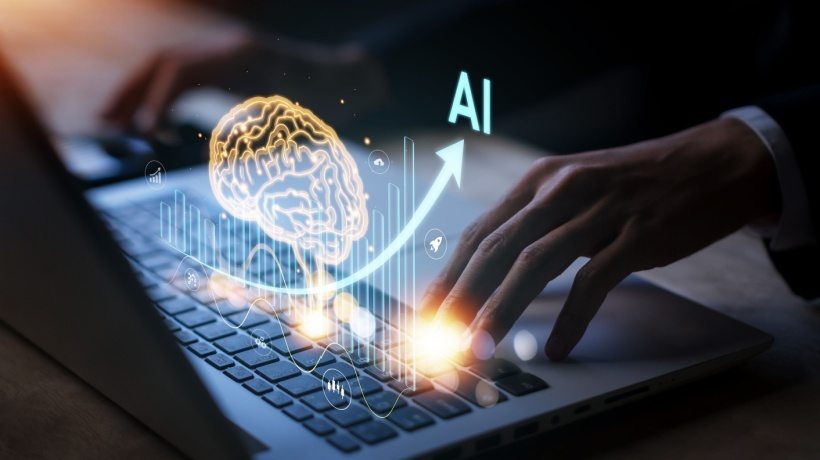How To Leverage AI In Learning And Development?
Although Artificial Intelligence (AI) has existed for years, discussions about its potential impact and dominance are increasing as the technology gradually takes over most aspects of human life. What is particularly interesting is the integration of this kind of AI into everyday functions such as Google searches, which depend on it for correct results. AI’s influence cuts across almost every industry. In healthcare, for instance, it can assist in the diagnosis of conditions such as cancer and strokes. In education, AI is not just limited to a classroom but also influences tremendous administrative systems and training programs within organizations. Many organizations have already incorporated AI technologies into their employee training and development plans. Below, you will find 10 ways to leverage AI in Learning and Development (L&D).
10 Ways You Can Leverage AI In Learning and Development
1. Deeper Analytics
Through AI in Learning and Development, pros can tap vast amounts of data from the digital workplace to enhance their courses. Through deeper data analysis, courses can be redesigned in more detail. This is because data is now a force that sets out to explore uncharted territories. First, data propels the organization’s ability to be agile and can be applied to create a culture of continuous improvement.
2. Relevant Content
AI can identify knowledge gaps and automatically find the most relevant material for the learner. It is just like how we all use Google to search for information. AI, being akin to Google, will be able to track the internet, Learning Management Systems, proprietary content, etc., to automatically suggest the most relevant content. Such a process saves the learner time simply because they don’t have to scroll through various search results pages for hours.
3. Virtual Coaches
AI-powered virtual coaches are like proactive virtual assistants for your site. They guide and assist learners as they work through a range of exercises, recommend content, track progress, respond to queries about the content itself, and send reminders about the learning material or deadlines. They essentially function like any of those customer service chatbots on millions of sites and websites throughout the internet. Unlike real coaches and administrators, virtual coaches are available 24/7. Therefore, they can answer most of the fundamental questions concerning learning materials, saving time for both learners and administrators.
4. Seamless Evaluation And Instant Feedback
Organizations would no longer need to assess learning through human effort, as they would be utilizing AI-based technology. AI can collect information, assess performance, analyze answer sheets, and produce reliable results. Workers can get immediate feedback and be informed about their performance. AI can be applied to all types of assessments and ensures that there are multiple approaches to evaluation according to the requirements of the staff. Furthermore, AI ensures that employees undergo assessments based on their ability, talent, and learning level. It leads to an accurate performance evaluation without discrepancies, such as some finding the tests too hard while others find them too easy.
5. Gaining Essential Insights
AI can scan data captured by an LMS and employee performance, collect feedback, and provide numerous analytics. The company can gain insights into its Learning and Development program with this data. Organizations can determine whether courses are effective, where improvement is needed, and what the main trends and patterns are. These insights allow you to optimize your training and development plan by tailoring the content of courses and by utilizing AI. AI can collect data 24/7, thus allowing you to make much more informed business decisions.
6. Upskilling Initiatives
Upskilling fills knowledge gaps, enhances employee performance and competency, and boosts retention. AI can help you accelerate these efforts. AI-based recommendations for training build personalized course catalogs at an incredible pace. The algorithm selects appropriate groups and content using learners’ job titles and associated skills and gathers the latest training materials from trusted sources. This way, you are offering your audiences personalized training materials according to their requirements and talent without the laborious work of manually customizing groups and accelerating the process of compiling course catalogs.
7. Identifying Knowledge Gaps
Corporate training approaches often involve generic instructions, but not all employees should take the same training. AI-driven data analysis allows you to find skill gaps efficiently. Through AI, learner profiling is automated, which makes it streamlined, allowing for differentiated training approaches. It enhances learning effectiveness and saves time for employees. Many online training companies widely use this concept. Education and training using AI aims to enhance learning and instruction and develop more effective and personalized learning opportunities.
8. 24/7 Access
We live in a world where access to information is available at every hour of the day and from every place on Earth. Staffers should get equal rights to access the learning process. This applies not just to millennials but all employees: they want to be able to access relevant courses on-demand, and AI-enabled LMSs make that possible by mapping out career routes and predicting the skills needed at every stage of an employee’s journey. A smart, future-ready LMS system should also accommodate a diverse workforce.
9. Developing Digital Content
Developing educational content is a time-consuming and daunting process, which is why many companies decide to outsource content development at a reasonable cost. AI would be able to do so by efficiently gathering information online and compiling it into readable formats that easily make sense. With this, AI can possibly record audio and use Natural Language Processing (NLP) to transcribe recorded videos, thus making it possible to turn podcasts, webinars, and lectures into notes.
10. Personalized Learning
Firm personalization was an unknown word in the corporate world, where employees were all seen as equal parts of a large workforce, and a one-size-fits-all approach was predominant. Employee training has undergone drastic changes, with emphasis laid on tailor-made learning. AI comes as a handy tool in handling individual learners; needs and how they have diverse learning methodologies; this has boosted learning and engagement through well-crafted content. An essential AI capability is offering content-related suggestions and recommendations based on job descriptions, preferences, and past content consumption. Such AI-driven recommendations complement learner autonomy and allow employees to find interesting and relevant content on their own, promoting self-directed learning.
Conclusion
Artificial Intelligence will revolutionize our lives, work, and the way we learn. You cannot overlook AI in Learning and Development if you want to stay competitive in the field. An organization that applies AI to the best of its energies will surely have better-trained and informed staff. However, don’t implement AI on your L&D without help. Use an AI-powered LXP to improve learning effectiveness and efficiency.

Skills Caravan
Skills Caravan multi-product Learning Experience Platform, Content Library, Engagement platform, Credentialing and Impact reporting we automate and integrate the Learning and Development process.

